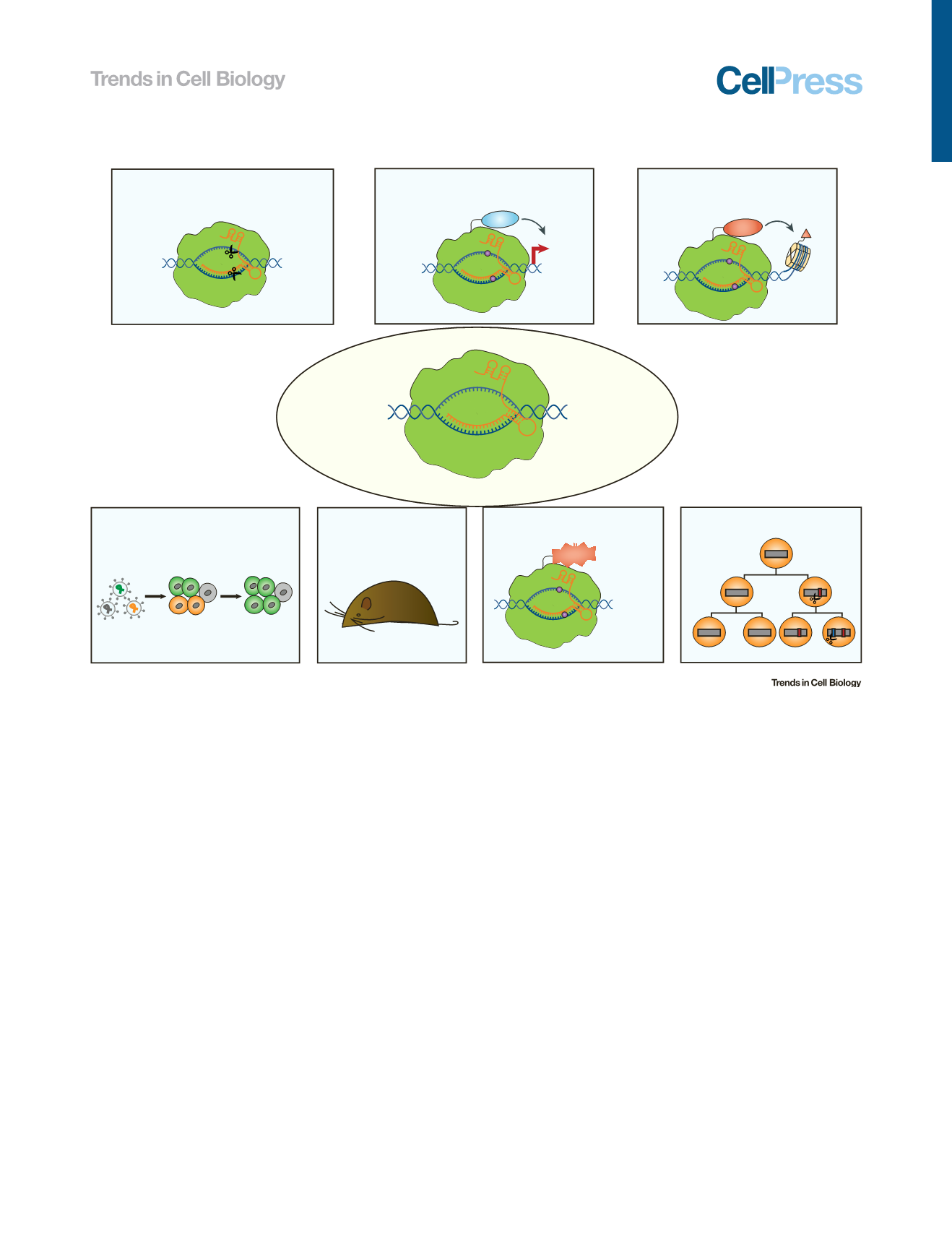

The Cas9 complex has since been developed as a remarkably useful tool for genome editing. As
demonstrated by the pioneering work in several cell types and organisms [22
–
26], the Cas9/
sgRNA complex can ef
fi
ciently generate DSBs, which then facilitates NHEJ-mediated gene
knockout or HDR-mediated recombination. This system has since gained rapid acceptance and
has been used for genome editing in essentially all organisms that can be cultured in the
laboratory. In this review, we focus on recent applications of CRISPR
[5_TD$DIFF]
/Cas9 in cell biology
research using mammalian cell cultures and animal models (Figure 2).
An Expanding CRISPR Toolkit for RNA-Guided Genome Editing
The different types of natural CRISPR system encode a toolkit for genome editing. Six major
types of CRISPR system have been identi
fi
ed from different organisms (types I
–
VI), with various
subtypes in each major type [27,28]. Within the type II CRISPR system, several species of Cas9
have been characterized from
S. pyogenes
,
Streptococcus thermophilus
,
Neisseria meningi-
tidis
,
Staphylococcus aureus
, and
Francisella novicida
[18,29
–
34]. While these Cas9s have a
similar RNA-guided DNA-binding mechanism, they often have distinct PAM recognition sequen-
ces. Similar to the toolkit of restriction enzymes for molecular cloning, a large toolkit of Cas9s
expands the targetable genome sequence for gene editing and genome manipulation.
Other types of CRISPR system may exhibit different mechanisms. For example, the Type III-B
CRISPR system from
Pyrococcus furiosus
uses a Cas complex for RNA-directed RNA cleavage
CRISPR/Cas9
Effector
Gene ediƟng/knockout
TranscripƟon
repression/acƟvaƟon
Effector
Me
EpigeneƟc
modificaƟons
Fluorescent
protein
Genomic imaging
Large-scale geneƟc screen
sgRNA library
Screening
Before
AŌer
GeneraƟon of
animal models
Lineage tracing
Figure 2. Applications of Clustered Regularly Interspaced Short Palindromic Repeats (CRISPR)/CRISPR-Associated Protein 9 (Cas9) to Cell Biology
Research.
CRISPR/Cas9 technology has been used for gene editing, transcriptional regulation, epigenetic regulation, large-scale genetic screens, generation of animal
models, and genomic imaging. Abbreviation: sgRNA, single guide RNA.
Trends in Cell Biology, November 2016, Vol. 26, No. 11
877


















